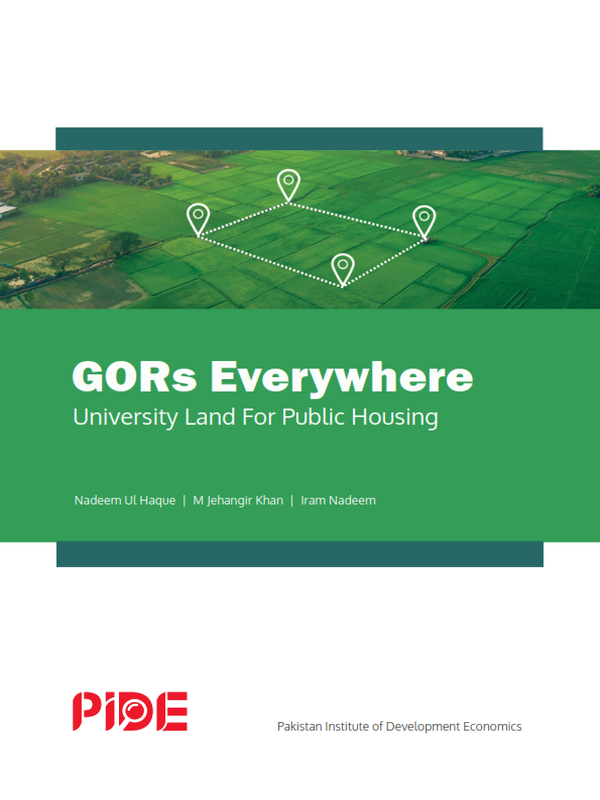
Pakistan Institute of Development Economics
- Home
Our Portals
MenuMenuMenuMenuMenuMenuMenu - ResearchMenuMenuMenuMenuMenuMenuMenu
- Discourse
- The PDR
- Our Researchers
- Academics
- Degree Verification
- Thesis Portal
- Our Portals
GORs Everywhere: University Land For Public Housing
1. Introduction
The role of universities has changed worldwide, moving away from the traditional model to one that is more contemporary and business-oriented. Universities are now acting as centers of advanced education and research, assuming the role of stakeholder organizations with greater administrative autonomy and financial independence (Bleiklie and Kogan, 2007).
Globally, two major challenges confronting higher education: growth and sustainability (Walker, 2015; Mense et al., 2018), and universities are compelled to reassess their missions and objectives (Taylor and Morphew, 2015; Mense et al., 2018). Because tax dollars are scarce, society no longer favors and financially supports higher education (Elbasir and Siddiqui, 2018; Molesworth, Scullion, and Nixon, 2011; Mense et al., 2018). To flourish in the knowledge economy, higher education institutions must adopt an entrepreneurial approach by aggressively promoting themselves (Judson and Taylor, 2014), forging collaborative partnerships (Tadaki and Tremewan, 2013; Mense et al., 2018), and proactively adapting to emerging disruptive technologies (Bickerstaff and Cormier, 2015; Cheng, 2016; Mense et al., 2018). Consequently, higher education institutions are aligning themselves as entrepreneurial models in both domestic and global markets (Barnett, 2011; Lane, Lemoine, Tinney, and Richardson, 2014; Mense et al., 2018).
Universities in Pakistan are not exempted from these concerns and face significant financial challenges, resulting in ongoing discussions regarding their funding. One issue that has been raised is the construction of housing colonies within university premises, which is seen as a misuse of valuable resources. The land owned by universities is a crucial asset and should be used strategically to ensure that the funds are allocated in the most effective way possible.
The objectives of this study encompass a range of aspects, the first being reorienting resource allocation: to critique the conventional practice of investing in housing colonies within university premises, advocating for a strategic reallocation of funds toward capacity-building initiatives with efficient land use to generate income. The second is economic and societal impact: to analyze the broader implications of such a shift, exploring the potential economic, social, and intellectual benefits that arise from directing resources toward the construction of shopping malls, hotels, art spaces, and apartments.
2. Global Comparison
In this study, we have considered three international universities—Harvard, Princeton, and Yale—and three national universities—Quaid e Azam University (QAU) in Islamabad, the University of the Punjab (PU) in Lahore, and the University of Peshawar. Our comparison reveals that the top international institutions strategically invest in their campus lands to maximize their potential and optimize their use. The images of Harvard University, Yale, and Princeton University in the following section serve as evidence that these universities go beyond constructing departmental buildings and instead have a visible presence of malls, shops, museums, and other multi-story structures (Figure 1). In contrast, universities in Pakistan often tend to leave their land unused or develop single-story houses in residential colonies, contributing to urban sprawl.



